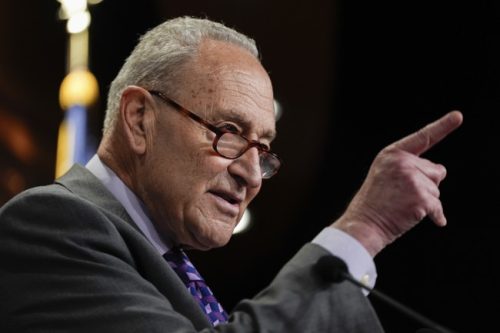John Brennan’s tense exchange with an intelligence officer who had access to the documents behind the 2017 Intelligence Community Assessment exposes how fragile the Russiagate narrative became once someone on the inside started asking pointed questions. The confrontation at George Mason University on October 30 put a spotlight on the Steele dossier’s role and on whether top intelligence officials misled Congress and the public. What follows is a clear-eyed account of that moment, why it matters, and how it feeds into broader concerns about accountability in federal intelligence. The clip shows a former CIA director forced to face someone who says he actually saw the paperwork and disagrees with Brennan’s public denials.
The scene is simple and telling: an intelligence officer identified as “Thomas Speciale” told a roomful of people he had reviewed the same files Brennan and others relied on. Speciale challenged Brennan directly, and Brennan’s discomfort was visible. This wasn’t a friendly debate among former colleagues; it was a confrontation that highlighted a gap between what was said publicly and what people inside the system remember seeing. For Republicans watching, the exchange underscored long-standing doubts about whether the intelligence community was candid with lawmakers and the public.
Last night at a conference with former CIA Director Brennon I confronted him regarding the fake dossier and the Russia Collusion hoax. Listen to his response. Just FYI – I wasn't uninvited to the afterhours. pic.twitter.com/sE96meMpHA
— Thomas A. Speciale II (@Speciale4VA) October 31, 2025
Brennan has publicly insisted the Steele dossier “wasn’t part of the corpus of intelligence information that we had. It was not in any way used as a basis for the Intelligence Community Assessment that was done.” That line from his congressional testimony in May 2017 is central to the disagreement, because Speciale and others say the dossier’s fingerprints are harder to erase than Brennan claims. If an inside reviewer says the document was part of the mix, that conflict matters both legally and politically. Perjury questions are not hypothetical when sworn testimony and firsthand assertions collide.
The Steele dossier was political opposition research paid for by a campaign, and its most explosive claims have been debunked or remain unverified. Yet it carried weight with senior officials at the time, including those in the Obama administration and in the FBI. That institutional embrace is what allowed a raw and partisan document to gain the sheen of official intelligence, and when the official story unravels, trust in those institutions suffers. Conservatives see this as more than a scandal; it’s a pattern of weaponizing intelligence for political ends.
Speciale’s line about not being invited to the after-event was a small, sharp jab, but the sting came from his testimony about the documents themselves. He positioned himself as someone with access and credibility, and his calm delivery contrasted with Brennan’s strain. Moments like that matter because they change the narrative from anonymous leaks and media impressions into a concrete contest of records and memories. When witnesses on the inside start to speak up, the cover story slowly peels away.
The legal stakes are clear: if key players mischaracterized what they relied on when briefing Congress, that opens questions about perjury and obstruction of oversight. Brennan’s testimony is already under scrutiny, and conservative investigators and watchdogs will push to see the underlying files and communications. Accountability isn’t about partisan revenge; it’s about ensuring that officials sworn to protect the republic don’t misuse their authority to influence politics. Republicans will insist on a full and transparent accounting.
Politically, this episode feeds into a larger critique about elites who refuse to accept unfavorable election outcomes. The Steele dossier’s reach into official assessments is often cited as the turning point that allowed the Russia narrative to transform into a sustained campaign against political opponents. For many conservative voters, that evolution is proof of bias in the national security apparatus. The Brennan-Speciale moment is a flashpoint that brings those broader grievances into sharp relief.
Watching Brennan handle the confrontation, you see someone who once stood at the top of the intelligence community suddenly boxed in by a peer who says he has the receipts. That dynamic is uncomfortable for a reason: institutions that depend on secrecy must still be honest with democratic oversight. When former officials resist accountability, they fuel calls for reform and stricter standards around how intelligence is gathered and presented. The public deserves to know where responsibility lies.
The implications go beyond one exchange. If the Steele dossier played a material role in shaping assessments, then policymakers and the public were misled at a consequential moment. That misdirection had real consequences for political careers, reputations, and public trust. Republicans will keep pressing this point until every relevant document is examined and explanations are provided under oath, not behind closed doors.
At its core, the confrontation is a reminder that truth can outlast spin when people with firsthand knowledge come forward. Speciale’s willingness to speak at George Mason University and to call out a former CIA director is the kind of testimony that forces a reckoning. Whether that leads to legal exposure, political fallout, or institutional reform will depend on how thorough and honest the follow-up scrutiny is. For now, the clip is a vivid example of what happens when the curtain is pulled back.






